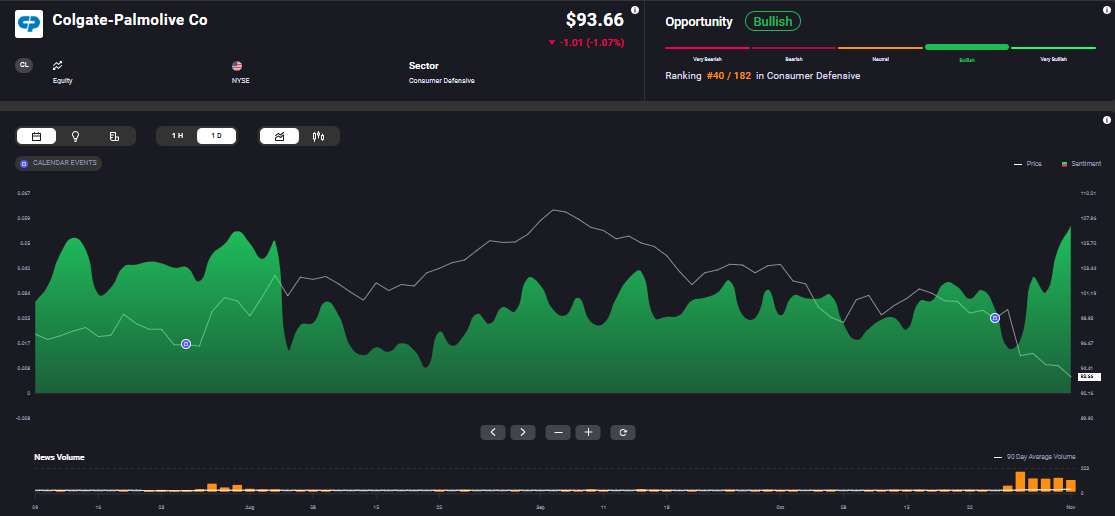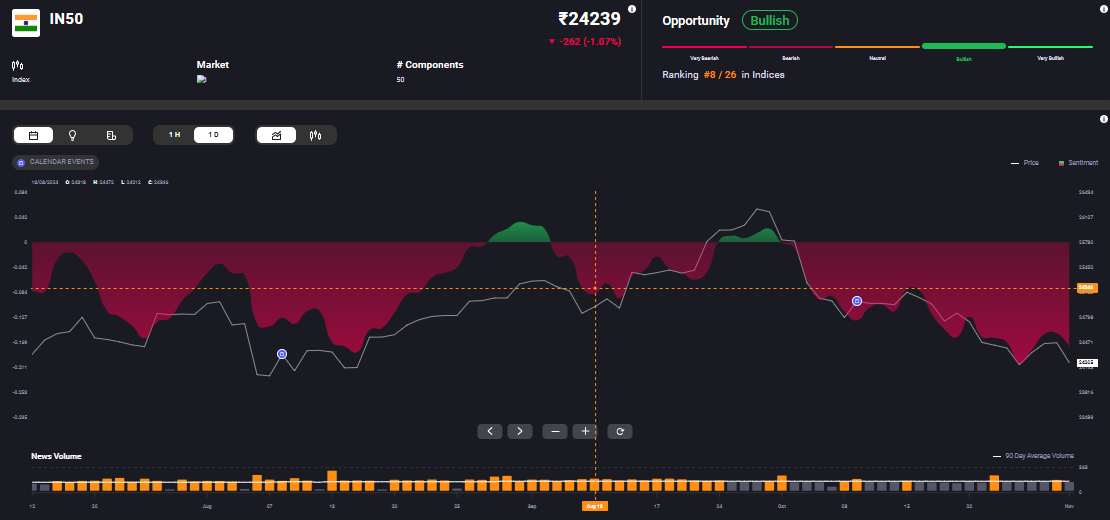The World Bank’s India Development Update: India’s Trade Opportunities in a Changing Global Context report for 2024 reveals that India's economic growth rose from 7% in FY22/23 to 8.2% in FY23/24. The Asian nation continues to witness healthy growth despite challenging conditions worldwide. The World Bank's medium-term outlook on India remains positive, with economic growth forecasted at 7% for FY24/25 with a decline in the current account deficit, which is expected to stay at about 1%-1.6% of the GDP till FY26/27.
In fact, the World Bank noted that India “remained the fastest-growing major economy,” with its growth being driven by the government’s infrastructure investments and an increase in real estate investments by retail investors.
In addition, the country's economic growth is supported by its strong manufacturing sector, which grew 9.9%, along with a resilient services industry, which mitigated the underperformance of the agriculture sector.
What's Driving India's Economic Strength?
An interplay of multiple factors is behind the resilient economic growth in India despite the global slowdown.
Strong Domestic Demand
The strength of the domestic demand can be seen in the significant growth of the Indian manufacturing and services sectors. The United Nations has echoed the World Bank's expectations of India remaining the "fastest-growing major economy" in 2024, driven by the strength of its domestic demand.
This is despite the expected sharp deceleration in the global economy, which the UN expects to slow down from an estimated 2.7% in 2023 to 2.4% in 2024. The positive outlook on domestic demand is reflected in the strength of fast-moving consumer goods (FMCG) stocks, such as Colgate-Palmolive. The sentiment for Colgate-Palmolive is positive, as can be seen on Acuity’s AssetIQ widget.

Government Investments
The Indian government has been significantly investing in infrastructure, including major connectivity projects, such as Bharatmala and Sagarmala, the India AI Mission and the Smart Cities Mission. Such investments drive demand and retail investments in the construction and manufacturing sectors.
The government is also expected to continue investing in its production-linked incentive (PLI) scheme, along with emerging sectors like semiconductors and renewable energy.
Banking and Financial Services
The strong performance of India’s banking and financial services sectors can be seen in the double-digit growth in bank credit. India’s stock market capitalisation has also risen rapidly, reaching an all-time high of $5.5 trillion in May 2024, after touching $4 trillion in December 2023.
This growth positions the nation as the fifth largest economy in the world in terms of its market cap to GDP ratio. The positive outlook on the banking sector is reflected in the bullish sentiment on HDFC Bank Limited, India's second-largest bank, on Acuity's AssetIQ widget.

International Trade
Global economic headwinds, such as the increasing protectionism witnessed in recent years, have not weakened India's international trade. The global value chain saw a major shift post-pandemic, which created opportunities for the nation.
In addition, government efforts, such as the National Logistics Policy and its digital initiatives have decreased trade costs. Services exports grew 4.9% to $341.1 billion in FY2023-24. Apart from the narrowing current account deficit, foreign direct investment (FDI) inflows have remained strong, with total FDI inflows recorded at $70.95 billion for FY 2023-24.
Improving Labour Market
The improving conditions of the Indian labour market are expected to support job growth and consumer spending. Urban unemployment has seen a gradual improvement post-pandemic, especially for female employees. While urban youth unemployment stayed high at 17%, female urban unemployment declined by 8.5% in FY24/25.
Moderating Inflation
The declining inflation rate creates a stable environment for consumers and businesses. As of August 2024, India’s inflation rate stood at 3.65%, the second lowest in the past 5 years.
Digital Technology Push
India's internet penetration rate stands at 52.4% in 2024, with the nation recording 954.4 million internet subscribers as of March 2024. By April 2024, 95.15% of villages had internet access with 3G/4G connectivity. The Indian government’s digital push is one of the factors behind the IMF’s expectation that the nation will play a prominent role, along with China, accounting for 50% of the global economic expansion.
In fact, the World Economic Forum stated that “India has been a key growth engine for the world" in 2023 and 2024 and could grow to become the third-largest economy over the next 5 years.
Conclusion
The resilient economic growth has led to a significant rise in the popularity of stock trading in India, with Acuity’s AssetIQ widget showing bullish market sentiment on India’s Nifty 50 index (IN50), the benchmark index that lists 50 of the largest stocks listed on the National Stock Exchange (NSE).
 As market sentiment is echoed by growth numbers, the Indian economy is one to follow closely for both brokers and investors.
As market sentiment is echoed by growth numbers, the Indian economy is one to follow closely for both brokers and investors.